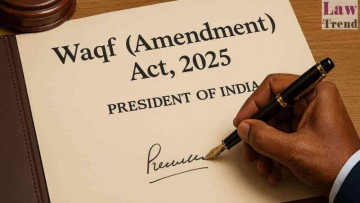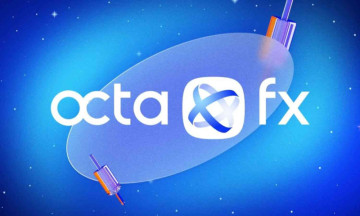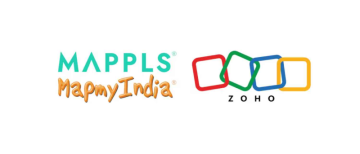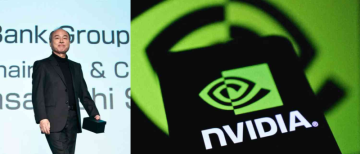In the high-stakes world of competitive trading contests, where traders compete on skill, speed, and strategy, the edge often lies not just in market knowledge but in the tools you use. Platforms like Crystallum AI, which offer algorithmic insights and risk-managed trade ideas, are increasingly shaping the leaderboard winners.
But how do you actually use such tools to win consistently?
This article uncovers proven strategies to win trading contests, optimized with Crystallum AI-like platforms. Whether you’re a quant, a discretionary trader, or someone new to competitions, this guide brings you the psychology, system, and structure of winning.
1. Understand the Trading Contest Format
Before you touch your charts, understand these:
-
Capital allocation (Is it fixed ₹10L virtual cash or variable?)
-
Allowed instruments (Cash stocks, futures, options, FX?)
-
Scoring metric (Net P&L? Risk-adjusted returns?)
-
Time duration (Intra-day, weekly, or multi-week?)
Tools like Crystallum help simulate strategies based on the contest rules. For example, if you're in a 5-day contest, a high-R multiple momentum strategy may outperform a slow, mean-reverting system.
Pro Tip: Always build your playbook backward from the leaderboard logic.
2. Use AI to Eliminate Noise, Not Just Predict Prices
Contrary to popular belief, the power of tools like Crystallum AI isn’t in predicting the market. It’s in filtering opportunities based on your edge:
-
Volatility compression breakouts
-
Relative strength filters
-
Position sizing based on real-time risk
These AI-driven scans help narrow down to top 3–5 trades daily, increasing focus and reducing overtrading — a key reason people lose contests.
Win Tip: Treat the AI as your quant research desk. Let it do the heavy lifting. You do the execution.
3. Create a Repeatable Contest Strategy Template
Every contest winner we interviewed (across brokers, prop firms, and trading platforms) had this in common — a repeatable system. Here’s what it typically includes:
| Step | Component |
|---|---|
| 1 | Daily Setup Selection using AI |
| 2 | Trade Plan (Entry/Exit/SL) |
| 3 | Position Sizing |
| 4 | Risk Management (Max drawdown allowed) |
| 5 | End-of-day Review |
With Crystallum-style tools, you can plug these steps into a dashboard that gives trade alerts, risk exposure, and performance analytics live.
4. Risk Management Wins More Contests Than Accuracy
You don’t need a 90% win rate. You need controlled losses and outsized winners. Competitive trading contests are often skewed by:
-
Drawdowns killing morale
-
Overleveraged positions wiping out P&L
-
Lack of stop-loss discipline
Crystallum AI-like systems shine here with automated risk controls, such as:
-
Capital-based position sizing
-
Real-time VaR tracking
-
Alert triggers for rule violations
Risk Rule to Tattoo: Never risk more than 1% of virtual capital per trade, especially in short contests.
5. Know When NOT to Trade – The Hidden Alpha
Not trading is also a strategy.
Platforms like Crystallum flag low volatility zones or choppy market phases. Sitting out of those days can give you a psychological edge, while others burn out.
Use tools to:
-
Get "no-trade" signals based on risk-reward distortion
-
Backtest how skipping bad zones improves your P&L curve
-
Build mental stamina by trusting the system, not FOMO
6. Backtest Past Contests and Trade Like a Machine
Crystallum AI-like tools often offer historical contest simulations. Use this to:
-
Identify which strategies consistently ranked top
-
Understand average holding period of winners
-
Reverse engineer entry timing and risk ratios
Pro traders don't reinvent the wheel. They optimize winning templates.
Hack: Use AI to simulate thousands of trade permutations from prior contests to narrow down winning variables. That’s how you trade smart, not hard.
7. Tame Your Psychology with Technology
Emotions — not bad strategies — cause most contest losses.
-
You take revenge trades.
-
You double down on losers.
-
You exit winners too early.
Crystallum AI tools bring automation, reducing emotional fatigue. Examples:
-
One-click execution of pre-verified strategies
-
Automatic SL/TP placement
-
Real-time discipline alerts (e.g., "Max 3 trades per day exceeded")
Mental Edge Tip: Let tech be your discipline coach.
8. Focus on High-Beta or High-Volatility Instruments
In short contests, low volatility = low opportunity.
AI tools like Crystallum help identify stocks with volume surges, implied volatility spikes, or news-based catalysts — the ideal ground for explosive moves.
Popular winners often rotate among:
-
Mid-cap momentum stocks
-
Index options with favorable Greeks
-
Volatility ETFs or leveraged derivatives
Let AI show you the heatmap of where alpha is hiding.
9. Record. Review. Refine.
No one wins all contests. But winners debrief every contest using tools that log:
-
Trade journal
-
Win/Loss ratios
-
Strategy-wise P&L
-
Time of entry/exit analysis
Crystallum’s analytics dashboards allow post-contest diagnosis. Use this to:
-
Cut low-probability setups
-
Double down on working patterns
-
Adjust SL buffers or entry triggers
Edge Building Rule: Every contest is your R&D lab.
10. Leverage Community & Leaderboard Intel
Watch what top traders are doing — especially if Crystallum or the contest platform provides live leaderboards or trade visibility.
AI tools can:
-
Tag trending setups across top performers
-
Run comparative analysis on styles (scalping vs swing)
-
Identify common winning parameters
Warning: Don’t blindly copy. Use it to validate or discard your own setup.
11. Combine Discretion with Data
Pure quant systems are rare winners unless optimized. Instead, winning traders use a hybrid model:
-
AI gives 5 setups
-
You pick 2 based on news, price action, or bias
-
AI executes the trade rules
Crystallum’s ability to merge discretionary views into quant workflows makes this hybrid style repeatable.
12. Train Before the Contest Like an Athlete
Don’t use the contest to “test” a strategy. Use the demo + simulation environment (most Crystallum-type tools have this) to:
-
Run dry runs of your plan
-
Understand slippage and latency
-
Tweak entry times and filters
Preparation Metric: Simulate 50–100 trades before you enter the actual contest.
13. Stay Ahead with Adaptive Systems
Markets change — what works in a trending market fails in a sideways one.
Crystallum AI constantly re-trains models on recent data, ensuring strategy adaptability.
If your system isn’t adapting to:
-
New volatility regimes
-
Sector rotations
-
Derivative rollovers
…you’ll be left behind. Plug into platforms that evolve.
From my experience as a trading expert who’s analyzed dozens of competition winners, these are the insider tactics that always separate the champions from the rest.
Master Your Risk Parameters First
Before you ever click “Buy” or “Sell” define your absolute maximum drawdown and stick to it like glue. I’ve seen talented traders blow accounts by chasing revenge trades after a small loss. Remember preserving capital isn’t dull - it’s your ticket to stay in the game long enough to catch a winning streak.
Tailor Strategies to Contest Rules
Each competition has its own quirks - minimum trade size, maximum open positions, mandatory holding periods or unique scoring metrics. The rulebook is like gold. In a recent 48-hour sprint, I remember that talented competitors who matched their scalping strategy with the competition's 1 pip profit target won hands-down, while others struggled, ignoring the crucial advantage.
Hone Entry and Exit Precision
In my view, contests reward activity but punish sloppy execution. Rather than chasing every signal, identify 1 - 2 setups you’ve backtested extensively. Maybe it’s a simple moving average crossover on a 5 minute chart or a Bollinger Band squeeze. When those conditions arise you’ll act swiftly and decisively - crucial in a Demo trading competition where each second counts.
Leverage Time-Based Tactics
Adjust your pace because most contests last for hours or days. Concentrate on high frequency scalps that consistently generate modest profits during brief sprints (less than 24 hours).
Think about using a swing strategy for multi-day tournaments, which involves making high-conviction trades through market noise. In my experience, striking a balance between patience and aggression results in more points than making pointless microtrades that accumulate slippage and commissions.
You should perhaps read this: Competitive Trading Contests
Keep Emotion in Check with Pre Trade Checklists
When the leaderboard teases you with glimpses of victory, it’s easy to abandon discipline. A simple pre-trade checklist - “Does this trade fit my plan? Is my risk level unchanged? Have I checked economic calender events?” - can snap you back into objective mode. Stories abound of traders who shredded their rankings by letting FOMO or overconfidence dictate their next move.
Review and Adapt Nightly
After each trading session, take 15 - 20 minutes to review your performance. Which trades nailed your criteria? Which ones deviated? As a contest progresses, small adjustments compound into major advantages. I’ve tracked contestants who turned a 5 % early drawdown into a top-3 finish simply by refining one key exit rule overnight.
Choose your next trading contest, draft your plan and start climbing that leaderboard today. The market rewards the prepared and the persistent - will you be there to claim your spot?
Winning a trading contest isn’t about gut feeling or brute luck. It’s about structured decision-making, tech-driven edge identification, and discipline.
Crystallum AI-like tools can be your co-pilot — scanning opportunities, enforcing risk, and removing emotion.
But the secret sauce? You.
You need to:
-
Build a repeatable system.
-
Let AI amplify your edge.
-
Treat every contest as an R&D loop.
Trade like an algorithm. Think like a founder. Win like a machine.
With inputs from agencies
Image Source: Multiple agencies
© Copyright 2025. All Rights Reserved. Powered by Vygr Media

























